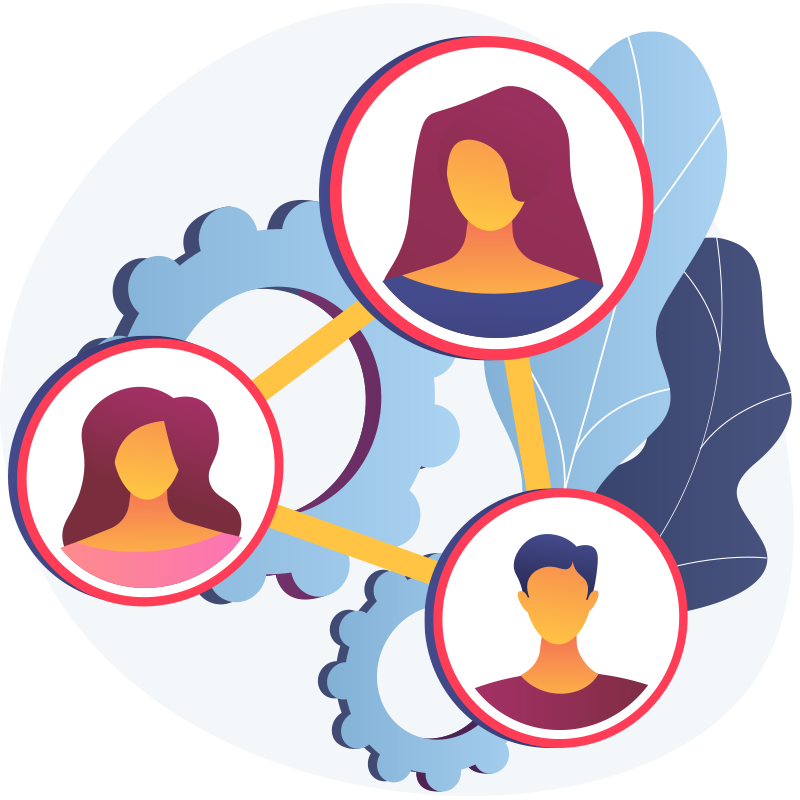Women and girls at risk of sexual exploitation and trafficking
Trafficking of women and girls for sexual exploitation covers about 80% of all cases of trafficking in human beings, and that makes it the most widespread type of human trafficking across the globe.
There are other reasons, such as migrations, growth of organised crime, deterioration of state institutions, process of transition, etc.
This form of human trafficking leads to forced prostitution and sexual slavery. Worldwide, typical destinations for victims of human trafficking are Thailand, South Corea, Japan, Israel, Belgium, Netherland, Germany, Italy, Turkey, and the USA, while victims are usually from Thailand, China, Nigeria, Albania, Bulgaria, Belorussia, Moldova, and Ukraine.
In the EU, countries of Western Europe are the main destinations for most of the victims, while countries of Central and Eastern Europe and the Balkans are the places of origin and transit of victims.


In MARRI participants, commonly, traffickers use false promises such as marriage or employment offers to force victims into sex trafficking. Traffickers exploit women and girls in sex trafficking within a country in private residences and motels, or in the hospitality industry including bars, restaurants, cafes, nightclubs, and massage parlors.
Victims are mostly women aged between 20 and 25, though 30% of all victims are girls between 15 and 18 years of age. In MARRI participants, most common victims are children and women from the Roma population, especially when it comes to forced marriages. Also, the tourist season is recognised as a period of highest risk for potential victims.
Traffickers are predominantly identified as men aged between 25 and 49, often members of organized criminal groups that operate in the Western Balkans.
Women and girls trafficking is a very profitable activity among organised crime groups. Compared with other forms of trafficking in human beings, trafficking of women and girls for sexual exploitation leaves the most difficult and complex psychо-social consequences on victims. Raising awareness and increasing knowledge on this issue could be a crucial part of addressing the problem, by warning and educating young girls, their families, and their surroundings about the dangers and risks of trafficking.

Tips
In the framework of a specific toolbox/concept developed for creating awareness raising campaigns about trafficking in human beings, we have enabled a cross choice among different target groups and campaign objectives for these groups, with a short advice on the best selection of tools for the chosen campaign type.
Choosing a target group means focusing on people interested in /sensitive to a certain topic and issues that need to be addressed in the communication. Target groups in the awareness raising campaigns may include: general public, vulnerable groups (e.g. women, children, migrants etc.), media, civil society organisations, decision makers, etc.
The awareness about a selected topic is raised for one or several objectives, which differ in regard to the selected target groups. These objectives may comprise: to inform people / raise awareness on a certain topic, educate on modalities of prevention among vulnerable groups and other target groups, induce change in behaviour among key target groups, start a public discussion, or influence relevant policy /regulatory changes referring to a selected issue, etc.
Once you have identified your target groups and objectives of the campaign, you need to select the right communication channels and tools to ensure continuous flow of information in your campaign. Tools relevant for a specific topic within the awareness raising campaign may range to include: PR (press release, interview, feature story, guest appearance, press conference etc.), TVC /radio, digital and social media, film and video, promotional /informative materials, public debates, workshops, public events, out of home advertising, position papers, etc.
- Use social media ads, as well as printed material such as posters in public places (malls, buses, bus stations) to target a wide group of young women.
- Endorse female celebrities or social media influencers on popular platforms (YT, Tik Tok, Snapchat…) to spread the message about risks for young girls.
- Provide formal and informal education of girls and women in schools, municipal centres in rural areas and alike, about the importance of economic independence gained through schooling and obtaining qualified jobs.
- Warn them about the risks of THB and provide information about relevant sources of information & SOS lines for counseling.
- Engage psychologists, sociologists and other experts to participate in public debates with young girls and women in local communities.
- Create a social media campaign with relevant hashtag associated with empowerment.
- Invite celebrities to share the content on their social media profiles.
- Set workshops and educational training in schools for teachers, parents, and families of girls in order to inform them about potential risks and main causes that influence risky behaviours.
- Sponsor social media ads designed for parents with advice on how to communicate on this topic.
- With educational materials, such as brochures or leaflets, support parents and families to honestly and directly talk with their daughters/relatives and warn them about risks and temptations they can face in everyday situations (on the street, in clubs, on social media etc.).
- Include parent and family associations in public debates and round tables, with the participation of experts and NGOs, in order to gather insights into struggles faced in family life nowadays and offer expert advice.
- Through featured articles publish key information on statistics related to sexual trafficking and stories of women and girls who struggled with sexual exploitation and trafficking.
- Organise lectures and workshops for teachers and school workers in order to educate them on how to recognize unsafe behaviours of female students, with special guidance on how to approach these students.
- Use short and simple video materials with clear messages and real-life cases of women and girls trapped in sexual exploitation or trafficking, interpreted by actors, to be played in schools.
- Include experts in the preparation of videos ( adjust the content to schoolgirls’ age).
- Organise peer to peer educational workshops in schools and & trainings on how to recognize unsafe behaviours.
- Implement activities in areas with statistically high exposure to trafficking (poor or border areas etc.).
- Involve representatives of the education system in public debates, round tables & expert conferences in order to discuss measures, policies and curriculum changes that refer to preventing risks of sexual exploitation and trafficking of girls.
- Create a policy brief with recommendations for improvement of the current situation in the educational system.
- Inform and educate associations gathering teachers, children educators and parents asking them to share field data and valuable experiences and recommendations for a policy brief.
- Organise round tables or workshops to define basic requirements and mechanisms needed for the policy change to support the prevention of sex trafficking.
- Develop an integrated communication campaign with various PR tools and mass media, conveying an aligned key message.
- Use a set of PR tools comprising interviews, feature stories, guest appearances, as well as TVC/Radio ads.
- Use promotional materials such as brochures, leaflets, flyers, badges distributed in public places, schools, etc.
- Engage celebrities & influencers to participate in the campaign, in particular on social media.
- Reach out ot the widest audience by using social media ads & posts on popular platforms (Facebook, Instagram, TikTok, YouTube, Snapchat) to present the trafficking issue among girls and women.
- Engage experts to participate in the campaign and present educative content via PR tools such as interviews, guest tv/radio appearances.
- Use storytelling in feature articles to explain the topic in an engaging and emotional manner, to evoke understanding and emotional response.
- Within the integrated communications campaign, create an engaging slogan and visual and use TVC/Radio ads, and out-of-home advertising (public transport stickers, park benches, city lights, billboards) to inicite a public discussion.
- Follow with ads and posts on social media, and engage celebrities to comment and share the content on their social media profiles.
- Pursue a public campaign to promote advocacy efforts made in direct communication with decision makers, to raise awareness of the essence of the proposals and changes advocated.
- Use the PR tools to present opinions of experts and selected CSOs, with press conferences, including press releases, interviews, and guest tv/radio appearances.
- Involve media as partners in an integrated communication campaign to raise awareness about THB.
- Encourage media to stand out against xenophobia and trafficking among migrants & refugees, by regularly disseminating information about this topic.
- Make media familiar with the background context and real-life cases of trafficking to be used in storytelling.
- Organise training sessions or provide guidebooks to instruct media to avoid victims stigmatisation and secondary traumatisation. In working with media, emphasise their role in creating public opinion.
- Encourage media to participate in round tables on this topic, provide expert education to promote positive behaviour, foster prevention, and suggest possible solutions.
- Put the topic of trafficking among girls and women on the public agenda long-term.
- Promote the key importance of tackling human rights and addressing patriarchal patterns in media to ensure democratic development of the society.
- Encourage media to gain deeper understanding of the overall context that poses trafficking risks for girls and women in the society.
- Provide to media statistics, infographics and other relevant data about trafficking among girls and women, and urge them to utilise such content in promoting the topic.
- Organise public debates, round tables, and expert conferences with the participation of CSOs to inform them on current challenges regarding the THB among girls and women, but also to collect experiences from the ground.
- Networking among different CSOs helps broadening the knowledge base and obtaining insights into best practices and case studies to improve future activities.
- Set up training sessions and round tables with the participation of experts, media, third-party endorsers, NGOs, school personnel and parents to encourage sectoral collaboration and knowledge sharing, i.e. collect valuable data.
- Promote public discourse on the topic of girls and women empowerment, advocate for the importance of education and economic independence for the prevention of sex trafficking among women and girls, and require better modalities of support to victims.
- Create a policy brief with recommendations for the improvement of current situation.
- In cooperation with relevant NGOs, women, family, and parents associations create a draft position paper or propose concrete measures needed to empower women and girls especially in vulnerable groups.
- Organize workshops to align on crucial topics and recommendations.
- Involve relevant ministries and other public bodies in charge of education & information, internal affairs, social welfare and health to participate in round tables and conferences, aiming to produce a joint policy brief or policy paper on the topic.
- Use PR tools such as press conferences, press releases, tv/radio appearances to make these activities known
- In order to create a fact sheet / policy paper aiming at empowering women through schooling, pre-qualification for the job market, organise a public debate or a round table with the participation of experts, media, third-party endorsers, school masters & teachers, and parent associations, and include representatives of relevant government bodies in the discussion.
- Incorporate representatives of local and national governments in the process of creating a policy brief and policy paper, to obtain data from both the local and national level and their advice on potential challenges of relevant legislative changes in combating against trafficking among girls and women.
- Present the position paper and policy brief for relevant ministries and other public bodies in charge of education, security, internal affairs, health and social welfare, and public administration representatives.
- Propose the establishment of working groups with experts, representatives of NGOs and media to define concrete recommendations for legislation changes.
- Use PR tools such as press release to disseminate the information to broader public.
Best Practice
Examples of Good Practice
The section “Best Practice” is intended to show what works best for particular topics or environments in awareness raising campaigns. Descriptions are made according to data available on-line and illustrate specific practices that have proved to be successful in their implementation. Campaigns described in this section were internationally implemented.


